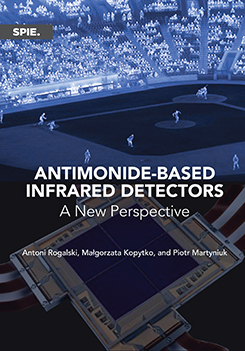|
There are different methods of light coupling in a photodetector to enhance quantum efficiency. A notable example of a method described for thin film solar cells can be applied to infrared photodetectors. In general, these absorption enhancement methods can be divided into four categories that use either optical concentration, antireflection structures, optical path increase, or light localization, as shown in Fig. 8.1.
Semiconductor materials used for photodetectors have large values of refractive index and thus large values of reflection coefficient at the device surface. This reflection is minimized using antireflection structures. The simplest way to enhance absorption is to use a retroreflector to double pass infrared radiation. In thin devices the quantum efficiency can be significantly enhanced using interference phenomena to set up a resonant cavity within the photodetector. Various optical resonator structures are used. In the simplest method, interference occurs between the waves reflected at the rear, highly reflective surface and at the front surface of the semiconductor. The thickness of the semiconductor is selected to set up the standing waves in the structure with peaks at the front and nodes at the back surface. The quantum efficiency oscillates with thickness of the structure, with the peaks at a thickness corresponding to an odd multiple of l/4n, where n is the refractive index of the semiconductor. The gain in quantum efficiency increases with n. With the use of interference effects, a strong and highly nonuniform absorption can be achieved, even for long-wavelength radiation with a low absorption coefficient.
|


